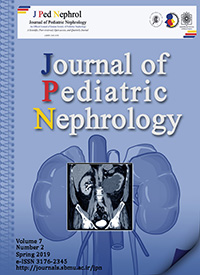Comparative Evaluation of Glomerular and Tubular Function Abnormalities in Patients with Different Forms of β-Thalassemia, an Emerging Concern
Journal of Pediatric Nephrology,
Vol. 7 No. 2 (2019),
31 August 2019,
Page 1-7
https://doi.org/10.22037/jpn.v7i2.27833
Thalassemia syndromes are the most prevalent hereditary hemoglobinopathy in the world. Reduction or absence of β-chain synthesis is the hallmark of β-thalassemia syndromes, resulting in an excess of alpha chains. In all of the patients with thalassemia major (TM) and some patients with thalassemia intermedia (TI), repeated and regular transfusions are the main part of treatment. In β-thalassemia minor, the patients are asymptomatic and diagnosis is often based upon hematologic parameters on CBC and hemoglobin electrophoresis. Both tubular and glomerular dysfunctions have been reported in three forms of β-thalassemia, but these changes are more prominent in TM and TI. Iron overload due to repeated transfusions, chronic anemia, and the toxicity of iron chelator drugs such as deferoxamine and deferasirox are the main factors in the pathogenesis of nephropathy in patients with transfusion-dependent thalassemia (TDT). In this review, the mechanism of renal disease in thalassemia, comparative assessment of kidney dysfunction in three variant forms of β-thalassemia, and markers of tubular and glomerular dysfunction have been discussed.
Keywords: Thalassemia; Anemia; Kidney; child.
